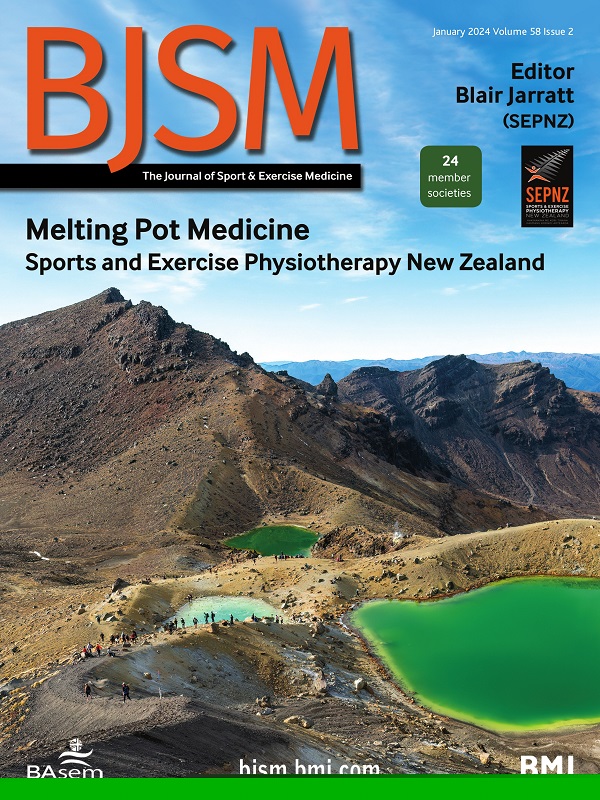Suicide in the sporting afterlife: lessons from the passing of Graham Thorpe
IF 16.2
1区 医学
Q1 SPORT SCIENCES
引用次数: 0
Abstract
Graham Thorpe played in 100 Test matches for the England national cricket team, with his last being in 2005. He scored 16 centuries within this form of the game and subsequently went on to coach within elite-level cricket in the years that followed.1 Sadly, Graham died by suicide, aged 55 years, in August 2024.2 Family, friends and many former teammates expressed their sorrow through the media around his passing and spoke fondly of their time spent with him. Suicide rates for men in England and Wales within late middle life continue to be relatively higher when compared with that of other stages of life and sex.3 Previous concerns with regard to a high death rate by suicide within retired or currently playing elite-level cricketers have largely been debunked.4 So why is it necessary to comment on the death of Graham? Within this editorial, we aim to explore issues of suicide and retirement from competitive sport while also providing suggestions on how learning and prevention can be maximised ‘sport-wide’. When a sports star dies suddenly, there is often speculation of cause of death. Thereafter, attribution can be made of sport-specific factors such as performance level or career transitions, contributing to eventual mortality outcome—often without scientific medical evidence. Factual reporting can be influenced by fear that …体育界死后的自杀:来自格雷厄姆·索普去世的教训
格雷厄姆·索普为英格兰国家板球队打了100场比赛,最后一次是在2005年。他在这种形式的比赛中得分16个世纪,随后在接下来的几年里继续担任精英级板球教练可悲的是,格雷厄姆于2018年8月自杀身亡,享年55岁。家人、朋友和许多前队友通过媒体对他的去世表示哀悼,并深情地讲述了他们与他共度的时光。在英格兰和威尔士,中年后期的男性自杀率相对于其他阶段的男性和性别自杀率仍然相对较高3 .以前关于退役或现役精英级板球运动员自杀率高的担忧在很大程度上已被揭穿那么,为什么有必要评论格雷厄姆的死呢?在这篇社论中,我们的目标是探讨自杀和退出竞技体育的问题,同时也就如何在体育运动范围内最大限度地学习和预防提供建议。当一位体育明星突然去世时,人们常常会对死因进行猜测。因此,归因可以归结为运动特有的因素,如表现水平或职业转变,导致最终的死亡结果——通常没有科学的医学证据。事实报道可能会受到恐惧的影响……
本文章由计算机程序翻译,如有差异,请以英文原文为准。
求助全文
约1分钟内获得全文
求助全文
来源期刊
CiteScore
27.10
自引率
4.90%
发文量
217
审稿时长
3-8 weeks
期刊介绍:
The British Journal of Sports Medicine (BJSM) is a dynamic platform that presents groundbreaking research, thought-provoking reviews, and meaningful discussions on sport and exercise medicine. Our focus encompasses various clinically-relevant aspects such as physiotherapy, physical therapy, and rehabilitation. With an aim to foster innovation, education, and knowledge translation, we strive to bridge the gap between research and practical implementation in the field. Our multi-media approach, including web, print, video, and audio resources, along with our active presence on social media, connects a global community of healthcare professionals dedicated to treating active individuals.

 求助内容:
求助内容: 应助结果提醒方式:
应助结果提醒方式:


